 | Warren Colburn - Algebra - 1828 - 330 pages
...divisor, produces the dividend 6 ab c. Examples. 1. How many times is 2 « contained in 6 abc ? Ans. 3bc times, because 3 bc times 2 a is 6 ab c. 2. If...letters of the divisor from the dividend. 3. Divide 16«6c by 4. 4. " 12 abc by 3 a. 5. " 20 abc by 10 b c. 6. " 18 abed by 6 ad. 7. " 23a6c by ab. 8.... | |
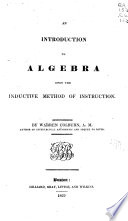 | Warren Colburn - Algebra - 1829 - 284 pages
...divided into 2 a parts, what is one of the parts ? Ans. Sic; because 2 a times 3 6 c is 6 « A <• Hence we derive the following RULE. Divide the coefficient...letters of the divisor from the dividend. 3. Divide 4. " 5. " 6. « 7. " 8. " 9. " Observe that 4 a3 is the same as 4 aaa and a* is the same as aa ; 4... | |
 | John Darby (teacher of mathematics.) - 1829 - 212 pages
...Multiplication, and is commonly divided into three cases. CASE I. When the quantities are both simple. RULE. — Divide the coefficient of the dividend, by the coefficient of the divisor, to obtain the coefficient of the quotient ; expunge the letters which are common to both quantities,... | |
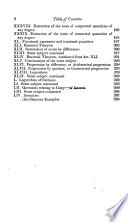 | Warren Colburn - Algebra - 1830 - 290 pages
...be divided into 2 a parts, what is one of the parts ? Ans. 3 bc ; because 2 « times 3 bc is 6 ab c. Hence we derive the following RULE. Divide the coefficient...coefficient of the divisor, and strike out the letters of ilie divisor from the dividend. 3. Divide 1 6 abc by 4. 4. " 12 abc by 3 a. 5. " 20a6c by 10 b c. 6.... | |
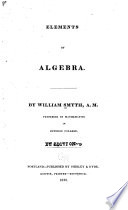 | William Smyth - Algebra - 1830 - 278 pages
...From what has been said we have the following rule for the division of simple quantities, viz. 1°. divide the coefficient of the dividend by the coefficient of the divisor; 2°. suppress in the dividend the letters, which are common to it and the divisor, when they have the... | |
 | Warren Colburn - Algebra - 1833 - 300 pages
...divided into 2 a parts, what is one of tht parts ? Ant. 3 6 c ; because 2 a times 3 bc is 6 a 6 c. Hence we derive the following RULE. Divide the coefficient...the dividend. 3. Divide 16 abc by 4. 4. " 12a6c by 3 a. 5. « 20 abc by 10 b c. 6. « 18 abed by Gad. 7. <• 23 abc by a b. 8. " 17 arf by ad. 9. " 4... | |
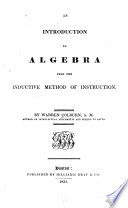 | Warren Colburn - Algebra - 1834 - 288 pages
...be divided into 2 a parts, what is one of the part? ? AM. 3 bc ; because 2 a times 3 6 c is 6 ab c. Hence we derive the following RULE. Divide the coefficient of the dividend by the coefficient rf the divisor, and strike out the letters of the dicisor from the dividend. 3. Divide 16n6c by 4.... | |
 | Charles Davies - Algebra - 1835 - 378 pages
...Also1 for, 7ai x 5a'ic = 35a^c. 50. Hence for the division of monomials we have the following RULE. I. Divide the co-efficient of the dividend by the co-efficient of the divisor. II. Write in tJie quotient, after the co-efficient, all the tellers common to tlie dividend and divisor,... | |
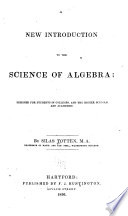 | Silas Totten - Algebra - 1836 - 320 pages
...therefore, only to reverse the rule for multiplication. For the division of monomials, we have thc'n the following RULE. Divide the coefficient of the dividend by the coefficient of the divisor, and to the quotient annex the letters common fo both, each affected wit'i an exponent equal to the difference... | |
 | Silas Totten - Algebra - 1836 - 332 pages
...to reverse the rule for multiplication. For the division of monomials, we have then the following i RULE. Divide the coefficient of the dividend by the coefficient of the divisor, and to the quotient annex the letters common to both, each affected wit,1 an exponent eqiial>to the difference... | |
| |